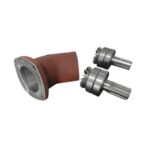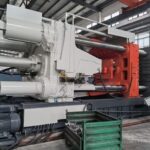Introduction to Die Casting Challenges
Die casting is a popular manufacturing process, but it’s not without its issues, such as short fills. This article explores the causes of short fills in die casting and offers effective solutions.

Hi, I’m Lai Haijiang, owner of Yongzhu Die Casting since 2004. Passionate about aluminum die-casting? Let’s chat! We craft custom aluminum parts for various industries and offer both manufacturing and wholesale services. Interested in being our overseas agent? Drop me an email with your ideas, and I’ll get back to you swiftly!
Understanding Die Casting Short Fills
What are Short Fills? Short fills occur when the molten metal fails to completely fill the mold, resulting in incomplete or defective parts.
Causes of Short Fills in Die Casting
1. Insufficient Molten Metal Temperature: If the metal is not hot enough, it solidifies before filling the mold.
2. Inadequate Mold Design: Poor mold design can prevent the metal from reaching all parts of the mold.
3. Incorrect Pouring Techniques: Improper pouring can lead to uneven distribution of metal.



Preventative Measures and Solutions
1. Optimal Temperature Control: Maintaining the correct temperature of the molten metal is crucial.
2. Mold Design Optimization: Design molds to facilitate even flow of metal.
3. Improved Pouring Practices: Ensure consistent and controlled pouring techniques.
Advanced Techniques to Overcome Short Fills
Incorporate technologies like simulation software to predict and prevent short fills, enhancing the efficiency and quality of die casting.
Conclusion
Short fills in die casting can significantly impact product quality. By understanding their causes and implementing strategic solutions, manufacturers can greatly reduce the occurrence of this issue, leading to more reliable and high-quality production.
Drop me an email with your ideas, and I’ll get back to you swiftly!

















